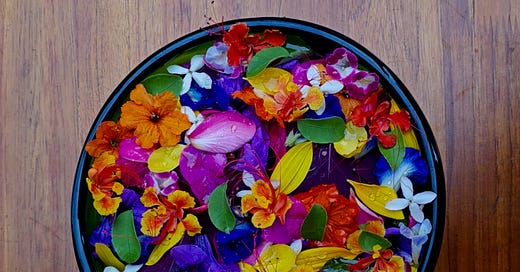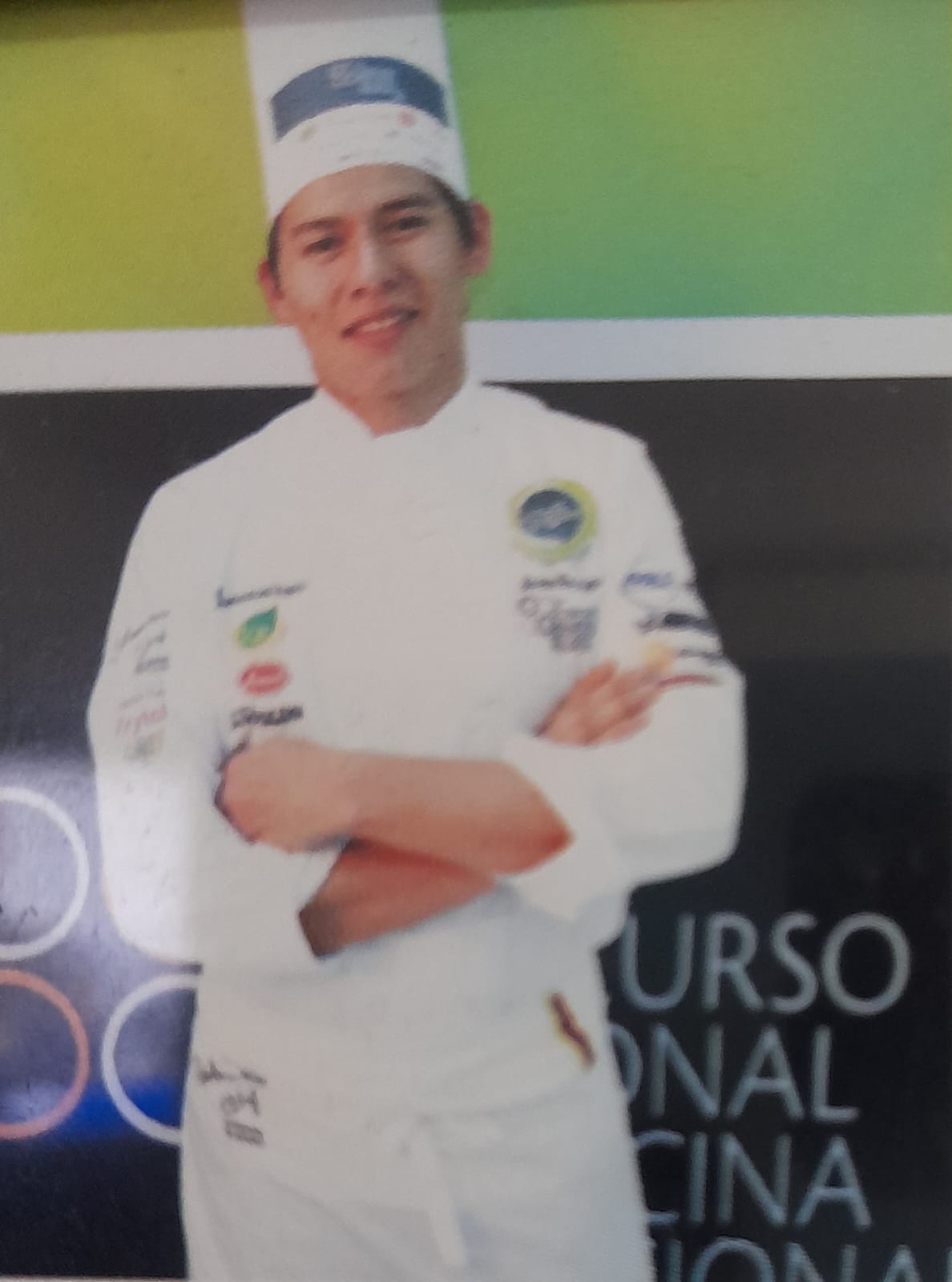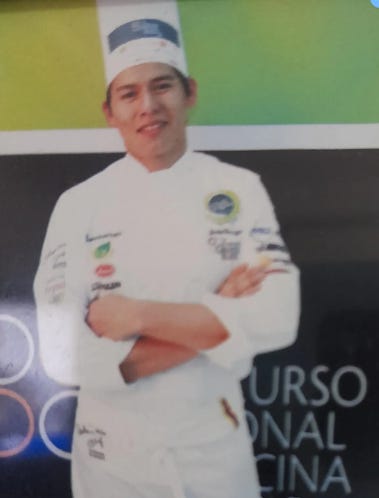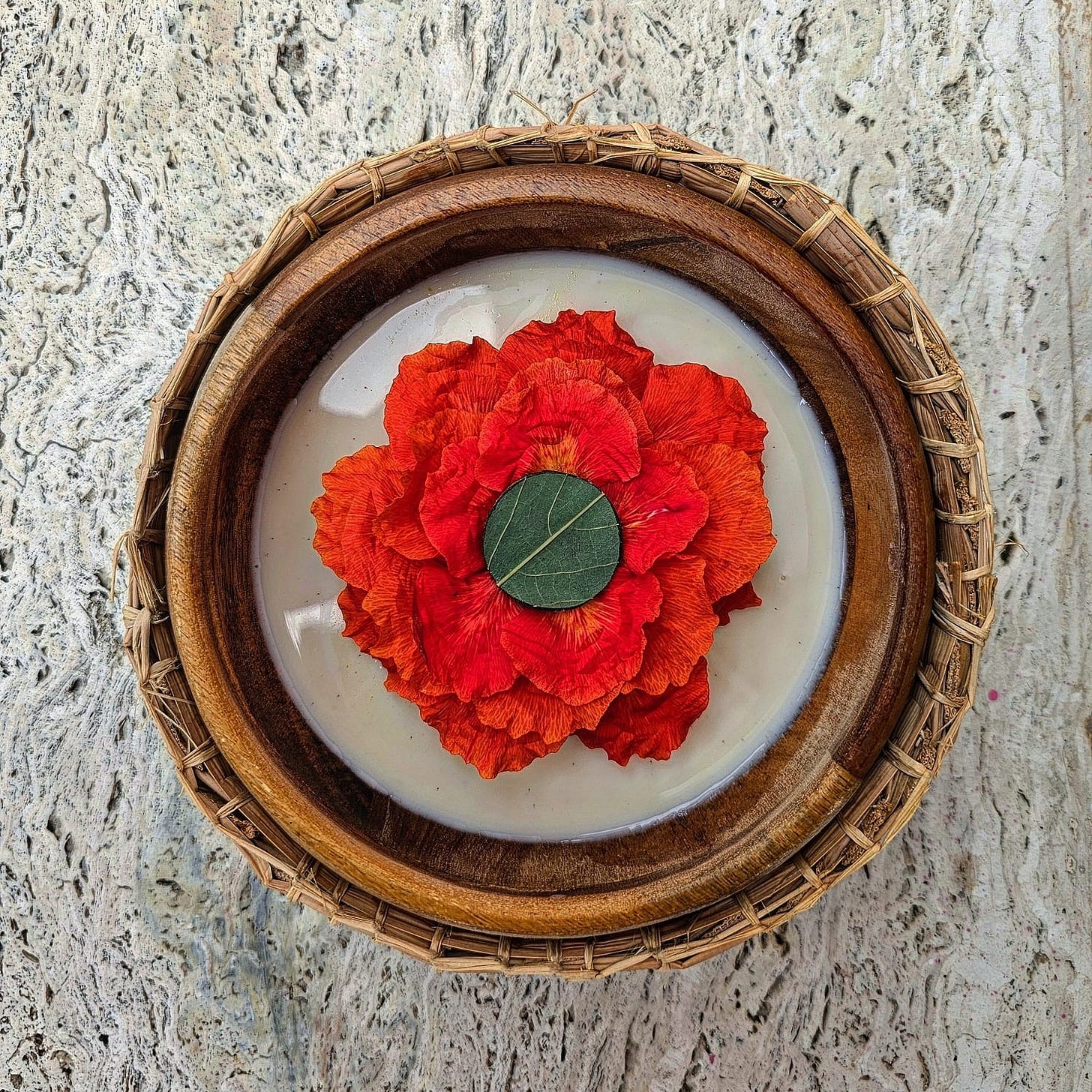El Camino Creativo: Jaime Rodríguez del Restaurante Celele
Jaime Rodríguez of Restaurant Celele: The Creative Journey to the Caribbean Landscape (English translation available bellow).
Esta es la grabación de una conversación con Jaime Rodríguez, del restaurante Celele en Colombia, en la que hablamos sobre su proceso creativo y de investigación, basado en la cocina tradicional y en la biodiversidad del territorio caribeño. En esa calurosa tarde en Cartagena rescatamos recuerdos de su infancia, hablamos del placer de comer y de su búsqueda por una creación ética y original. Haz click para escuchar nuestra conversación completa.
Jaime chef de Desarrollo Creativo e Investigación del restaurante Celele en Cartagena, un lugar que sirve como nido de cocina contemporánea del caribe colombiano. Durante los últimos 5 años Celele se ha dedicado a representar las tradiciones culturales y la biodiversidad del Caribe colombiano, apoyado por el Proyecto Caribe Lab, que es el núcleo de investigación del restaurante, desde el cual se conducen estudios junto a cocineras tradicionales, biólogos, y universidades.
Los platos en Celele estallan en color y sabores, con toques estéticos que ya se han convertido en iconos del restaurante. Por eso, comienzo nuestra conversación con una pregunta que creo ser el punto de partida '¿Cómo nace un plato en Celele?' y Jaime, amablemente, me lleva por un viaje desde el comienzo de su carrera.
Jaime: ‘Yo no soy del Caribe, soy de la parte andina de Colombia, crecí en otra zona y en otra geografía, y llevo once años viviendo en Cartagena, donde vivo al lado del mar y veo tantos colores. La cocina del Caribe es un mestizaje de la cocina árabe, de la cocina africana, europea y de la cocina indígena. Es una cocina muy diversa y te encuentras con un abanico de posibilidades.'
Desde muy temprano Jaime fue un fanático de la cocina, observando lo que sucedía tanto dentro como fuera del país, y participando en concursos internacionales como el Bocuse d’Or. Jaime era un admirador de René Redzepi de Noma, y de cómo él llegó a crear un paisajismo nórdico en sus platos. Hubo un momento clave en la carrera de Jaime carrera, antes de que existiera el restaurante Celele, en el que él escuchó un consejo de una persona que siempre fue como una mentora para él - la chef y escritora gastronómica, Luciana Biancchi - quien le sugirió unir su admiración por representar territorios, con su deseo de expresar la riqueza del Caribe colombiano.
Así, Jaime empieza a enfocarse más profundamente en una estética gastronómica del Caribe colombiano, teniendo las flores comestibles como punto de partida - que hoy en día hacen apariciones frecuentes en los platos de Celele - junto a una inmensa variedad de ingredientes del territorio.

Jaime explica: "Querer abrir una propuesta de la cocina del Caribe tiene que ser algo basado en investigación: empaparte del tema, viajar, ir a los territorios, entrevistar a las cocineras tradicionales, ver los productos que hay en la zona, y empezar a crear a partir de ahí. Es encontrarte con un montón de ingredientes y cosas que no sabes si se usan o no se usan, entonces también es valerse de recursos como el Jardín Botánico de Cartagena, biólogos marinos y universidades. Y ese fue el punto clave, cuando pensé: 'Voy a hacer cocina del Caribe, pero quiero hacerlo bien, quiero ser ético y respetar las tradiciones y el territorio'.
Escucharlo hablar de su filosofía como cocinero en este proyecto, me hizo pensar que alguien que le dedica tanto amor estudiar y cocinar, seguramente debe amar comer en la misma proporción.
Zaira: ‘Cual es tu relación con las sensaciones al comer?’
Jaime: ‘La verdad es que soy bastante glotón, yo creo que no hay algo que no me guste. Me divierte ir a la casa de mi mamá y comer lo que hace ella. Aunque sea algo sencillo, como arroz con lentejas, pero que esté bien guisado y sabroso. Y obvio, me gusta muchísimo el aspecto visual, que la comida se vea linda. Y me encanta lo que sucede en Celele cuando le llega un plato a un cliente y es como '¡uau!', ver la primera reacción que tiene la gente cuando prueba algo y mira a la persona en frente.’
Zaira: ‘En el cerebro, la amígdala, que es responsable de procesar las sensaciones olfativas, es la misma que procesa y guarda los recuerdos, lo que provoca que al tomar una sopa o percibir un olor familiar, te traiga algún recuerdo. ¿Cuál es tu primer recuerdo en la cocina y qué olor tenía?'
Jaime: ‘Mi mamá siempre cocinaba todo tipo de comida porque ella es una gran cocinera. Hacía un pescado de río que guisaba con tomate, cebolla, comino y leche. Es un plato muy típico del norte del país, es delicioso, y lo comíamos con patacones. Es fantástico acordarse de eso. Por otro lado, mi abuela paterna cocinaba bastante en horno de barro, desgranaba el maíz, lo molía y hacía arepas rellenas con queso, y ese olor a horneado era delicioso. También recuerdo el aroma de cuando mi mamá hacía tortas.’
Jaime recuerda que cuando era chico le fascinaba ver la cocina de su casa llena de tortas que su madre hacía para la temporada de eventos (casamientos, fiestas, comuniones) - tortas que se iban conquistando todos los rincones de su casa. Me pregunto si, quizás, es de esa infancia decorada con tortas y comidas ricas, que surge en Jaime el ímpetu de crear belleza, sabor y color a través de la comida; Para mí, es una de las mejores formas que existen de honrar el Caribe colombiano.
Esta esta es una transcripción parcial de una conversación, que fue levemente editada. Puedes escuchar la entrevista completa en el audio.
Gracias por leer! Si quieres acompañar mi trabajo y otras historias (normalmente en inglés), puedes subscribirte para recibir las próximas publicaciones.
Jaime Rodríguez of Celele: The Creative Journey to the Caribbean Landscape
In this interview, Jaime Rodríguez talks about the practical and conceptual step-by-step of his creative process, as well as the learnings and different events throughout his life that led him here. In this conversation we had on a warm afternoon in May in the city of Cartagena, we talked about childhood memories, the pleasure of eating, and his search for ethical and original creation.
Over the past 5 years, Celele was the has been serving dishes that represent the cultural traditions and biodiversity of the Caribbean territory, supported by the Caribbean Lab Project, the restaurants research hub. This work has been accomplished through extensive collective collaboration with traditional cooks, biologists, universities, and mentors.
Jaime is the chef of Creative Development and Research at the restaurant Celele in Colombia, a place that serves as a hub for contemporary Caribbean cuisine. The dishes at Celele burst with color and flavors, featuring aesthetic touches that have already become iconic. That's why I start our conversation by asking Jaime, "How does a dish come to life at Celele?" and he kindly takes me on a journey from the beginning of his career.
Jaime: "I am not from the Caribbean; I come from the Andean region of Colombia. I grew up in a different area and geography, and I have been living in Cartagena for eleven years, where I reside by the seaside and witness an array of colors. Caribbean cuisine is a fusion of Arab, African, European, and indigenous cooking. It is a highly diverse cuisine, and you encounter this wide range of possibilities."
From very early in his career, Jaime was a culinary enthusiast, observing what was happening both inside and outside the country, and participating in competitions like Bocuse D’or. Jaime had been an admirer of René Redzepi from Noma and how he managed to create Nordic landscape on his plates. At a moment when Jaime was evaluating what to do with his curiosity about the Caribbean territory, he received an advice from someone who had always been a mentor to him - the chef and food writer, Luciana Bianchi. She suggested that he combine his admiration for Nordic culinary aesthetic with his desire to express the beauty of the Caribbean.
From that day, Jaime started developing a Caribbean culinary aesthetic in his dishes, having the diversity of edible flowers as a starting point: an ingredient that nowadays makes frequent appearances in Celele's dishes, along with a great variety of local ingredients.
Jaime explains, "Wanting to showcase Caribbean cuisine requires a strong foundational research: immersing yourself in the subject, traveling, visiting the regions, interviewing traditional cooks, seeing the local products, and starting to create from there. It's about encountering a lot of ingredients and things you don't know if are meant to be eaten or not. It required partnering with resources like the Cartagena Botanical Garden, marine biologists, and universities. That was the turning point when I thought, 'I'm going to do Caribbean cuisine, but I want to do it well, I want to be ethical, and I want to respect the traditions and the territory.'"
As I heard Jaime describe his work, I couldn’t help but think that someone who is so dedicated to researching food, must love eating in equal proportions.
Zaira: "What is your relationship with sensations when eating?"
Jaime: "The truth is love eating, I don’t think there's anything I don't like. I enjoy going to my mom's house and eating what she makes. Even if it’s something simple, like rice and lentils, I only care that it’s well cooked and tasty. And of course, I care about the visual aspect, that the food looks beautiful. I love what happens at Celele when a dish is brought to a customer, and they go 'wow!' I love the first reaction people have when they try something and look at the person in front of them."
Zaira: "The amygdala in the brain is responsible for processing olfactory sensations, is the same part of the brain that processes and stores memories, which causes us to access certain memories when we smell or taste something. What is your earliest memory in the kitchen, and what smell did it have?”
Jaime: “My mom always made all kinds of food because she is a great cook. She used to make a fish stew with tomatoes, onions, cumin, and milk. It's a very typical dish from the northern part of the country, it's delicious, and we would eat it with plantains. It's fantastic to remember that. On the other hand, my paternal grandmother cooked a lot in a clay oven. She would shell the corn, grind it, and make arepas with cheese, and that smell of things baking in the oven was delightful.”
Jaime also remembers the aroma when his mom made cakes. As a kid, he was fascinated by seeing the kitchen of his house filled with cakes that his mother made for special events season (wedding, graduations, etc).. I wonder if perhaps, from that childhood adorned with cakes and delicious meals, grew the drive to create a cuisine that expresses beauty, flavor, and fun. From my point of view, that is one of the best ways that Jaime could have found to honor the Colombian Caribbean.
Thank you for reading! This publication is normally written in English. Here, I attempted to translate words and emotions from an interview in Spanish - slight edits and adaptations were made for reading purposes.
Subscribe to receive future updates, and support this publication by sharing with a friend. It goes a long way. Thanks!








